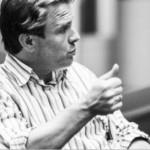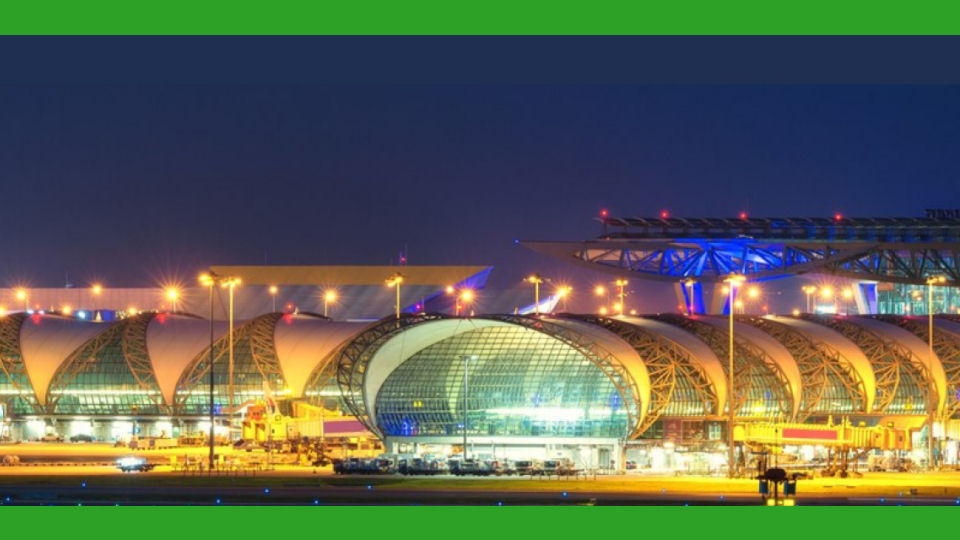If you look around you'll find avoidable waste practically everywhere. This seems inevitable in all operational activities at the moment. This article introduces an energy user proficiency model to help identify levels of energy proficiency to cut costs, save water and energy, and reduce environmental impact.
Will you Thrive or Survive?
1. What is your level of proficiency?
2. Where do you need or want to be in the future?
This guide introduces a basic, quite crude model, to help all types of energy user:
It’s meant to be a simple guide based on practical experience and feedback from energy users over the years.
The real value often comes from talking about this with the other people involved.
The model has 5 levels:
- Level 0: I don't think about energy efficiency
- Level 1: Foundation Level
- Level 2: Everyday Champion
- Level 3: Smart Savers
- Level 4: Master Practitioner or Leader
We rely too much on just hoping we're efficient
- Many organizations waste at least 20-30% of the energy they buy. (#CarbonTrust)
- In some countries, buildings consume two to three times more energy than their equivalents in other countries. (#BetterBuildingsPartnership)
- We rely too much on others to tell us what is efficient despite them not knowing our operations and having to make assumptions.
- Our fear of making mistakes also means we inevitably overprovide in our facilities and operations.
- Recognize the avoidable energy waste coming from overprovision and take advantage of the opportunity!
A leader is someone who can see how things can be improved and who rallies people to move forward.
Jacob Morgan
The good news is that where there’s waste, there’s an opportunity:
- For our organizations - to cut costs, manage increasing energy prices and significantly reduce environmental impact.
- For Everyday Energy Champions - to grow their environmental skillsets, and learn and develop as much as they can.
The most effective way to energize change is by developing a proficiency in leadership that's taken on by all of us i.e. not just the CEO.
Thrive or Survive
Surviving means we carry on as we are i.e. business as usual which often means fear, anxiety and a lack of trust.
Or we can focus on thriving with the courage to try things out – the ultimate aim is to be confident we’re only using what we need.
Thriving relies on both technical and behavioral solutions; behaviors are important as proficiency in energy performance always comes back to the people involved.
This basic 5 level model is based on practical experience from over 25 years of improvement projects. The secret is to connect the technical, behavioral and operational aspects of change.
Logistics Company Achieves ISO 50001 in Record Time
Challenge: Involve, empower and train local everyday champions, doing it for themselves
Result: ISO 50001 certification achieved in less than 6 months with a new continual improvement energy system in place
“This is a fantastic achievement and demonstrates how a collaborative and focused approach can bring our teams together from different countries and at all levels in our business to gain this certification so quickly. I am impressed with the team’s commitment to energy management and their enthusiasm in meeting the aims of our policy.” Company Chief Operations Officer, 2018
“It has been a pleasant surprise to audit a company that is doing it not only because it is needed, but also because they are into the subject!” External ISO 50001 Auditor
This approach has delivered results – significantly cutting energy use, carbon emissions and costs – and has received positive feedback from staff.
Big Business Big Responsibilities, 2010
The 5 Proficiency Levels
Level 0: I don't think about energy efficiency - it's all on most of the time
At level 0, the behavior tends to leave systems on for maximum levels of service or because there are perceived service or reliability issues. In reality, this practice isn’t adding value, but it is just significantly overproviding
We see this in some areas in at least 50% of the organizations we work with.
Typical impact
- Higher cost – due to the larger amounts of avoidable waste
- Larger environmental impact – and CO2 emissions
- Lower stakeholder value – as it's not fit for purpose
Example key Actions
- Install some visible ways to save energy & water, e.g., new lighting systems or water saving controls
- Focus on creating some green sparks to get colleagues interested
Level 1: Foundation Level - I'm active but risk averse
At level 1, individuals and teams are more aware of the drivers, but actions are low risk.
The problem is often that you still see energy & water savings going against other operational (priority) objectives.
Some of our colleagues call this level (a bit tongue in cheek) ‘toeing the line’:
– Some systems and equipment may be switched off, but generally…
– This only happens when risks are considered very low because of our fear of making mistakes.
![Foto_04-06-20,_17_33_46-min[1] water savings technology dual flush](https://biggreenacademy.com/wp-content/uploads/2020/07/Foto_04-06-20_17_33_46-min1-scaled.jpg)
“We have the water savings technology so surely our toilets must be efficient!?” our Customer Services Manager said, but in practice metered consumption showed the full flush button is still used most of the time.
Typical Impact
- No correlation between energy or water consumption and commercial activity
- Very little savings achieved in practice
Example Key Actions
- Raise awareness and visually demonstrate levels of avoidable waste and opportunities missed
- Shake things up; you may need to become an agent provocateur
- Simple messages often work best here: Switch it off, Turn it down
![eguide_page_4-min[1] Members Lounge Chart – Visualizing Avoidable Waste](https://biggreenacademy.com/wp-content/uploads/2020/07/eguide_page_4-min1.jpg)
Example Hospitality Lounge Chart – Visualizing Avoidable Waste
- Red shows typical energy consumption over a day, 24 hours
- In green, the chart plots the number of customers using the space over the same time period
- Comparing the two, through a commercial lens, means the avoidable waste jumps out at you
- Since then, the teams are now making progress and have saved the equivalent of $30,000 per year in reduced energy consumption (to 2019), with much more opportunity to target
Level 2: Everyday Champion - making it work as intended
At level 2, we find ourselves thinking about energy & water performance for 20 minutes or so every day.
Everyday champions can thrive in most cultures, often working by themselves in areas they know well.
This is about doing things right, following well-known operational practices and procedures.
Some measures may require some technical knowledge or input, such as understanding the benefits of upgrading boilers or retuning air-handling units.
![eguide_page_5_III-min[1] energy user switching lights off](https://biggreenacademy.com/wp-content/uploads/2020/07/eguide_page_5_III-min1.jpg)
Typical Impact
- Quick wins are made though you may be unsure how to prioritize your ideas and actions
- There’s pride in systems working well, but you may struggle involving colleagues, so savings can be lost when you move on
Example Key Actions
- Prioritize actions using good practices in design, operation and maintenance activities
- Share experiences and lessons with colleagues as and when you can
Challenge: Controls service partner to re-tune the air-handling units (AHUs) so they work properly again
Approach: Apply remedial measures and track savings on AHUs for a trial area so the system is controlled by ventilation requirements as intended – rather than being left on at full power, all the time
Savings per year (Electricity use): Low: 700 MWh; High: 650 MWh; Most probable: 600 MWh
See chart below
![eguide_page_5_IV-min[1] "before" chart showing electricity consumption](https://biggreenacademy.com/wp-content/uploads/2020/07/eguide_page_5_IV-min1.jpg)
BEFORE CHART
![eguide_page_5_V-min[1] "after" chart showing electricity consumption decreased](https://biggreenacademy.com/wp-content/uploads/2020/07/eguide_page_5_V-min1.jpg)
AFTER CHART
The 'Before' chart shows electricity consumption for one of the AHUs in the trial area over 7 days; you can see it only switches off overnight otherwise it runs at full speed (and full power) every day. The 'After' chart illustrates 70 to 80% daily reduction in energy consumption for this targeted area of use.
Level 3: Smart Savers – connections for ‘Win Win’ solutions
Level 3 is more sophisticated. We see many champions working effectively at this level. They prioritize projects with multiple benefits: a ‘Win’ for the organization and a ‘Win’ for the people involved.
Typical Impact
- Bigger wins come about when you collaborate and work closely with colleagues, particularly when you involve others who best understand the levels of service required
- You learn from experience, though you can struggle converting action into on-going continual improvement for long-term savings
Example Key Actions
- Connect strategies and prioritize projects that improve service, occupant comfort. Make maintenance easier, as well as cutting costs and pruning environmental impact
- Apply tools that better connect people and simplify the process e.g. #Pareto80/20
Challenge: Building FM team to upgrade an airport departures lounge lighting system
Approach: Lighting upgrade to reduce energy consumption by 60-80% and also improve the ambiance in the area for passengers
Savings per year (Electricity use): Low: 120 MWh; High: 170 MWh; Most probable: 150 MWh
![eguide_page_6-min[1] energy users team](https://biggreenacademy.com/wp-content/uploads/2020/07/eguide_page_6-min1.jpg)
This is an airport example (from 2007) that created the spark for the local team to go on to deliver 30%+ energy savings across the whole terminal building over 3 to 5 years and equivalent to savings worth over $1.2m a year. The approach focused on targeting biggest impacts using Pareto 80/20. We've included this old example here as it's been a pathfinder example project for us ever since.
This chart models the split of overall energy consumption for the terminal building. This helped the team target the best opportunities and think more holistically
Level 4: Master Practitioner & Leader - taking pride in only using what you need
![eguide_page_7-min[1] Violin player under a spotlight, visualizing the concept of only using what you need](https://biggreenacademy.com/wp-content/uploads/2020/07/eguide_page_7-min1.jpg)
Level 4 is the pinnacle – the point when you have the proficiency to be absolutely confident you’re ‘only using what you need’. Some consider this is as the point of utopia to continuously move towards, that delivers overall best value, but one that you never actually reach.
Typical Impact
- Achieving maximum levels of savings as complex situations are distilled down into simple effective solutions
An energy conscious culture clearly integrated into your approach with devolved targets and tracking etc.
Example Key Impact
- Think strategically, be centered around continual improvement, learning and innovation to deliver the 'Wins for All of us'
- Lead by example, promote collaboration, and achieve long-term results
Challenge: Process performance improvement team were challenged to see how low they could go (in energy consumption) for a trial material handling process
Approach: ‘100-day plan’ of steps to highlight the level of avoidable waste and to apply an on-demand philosophy to the process to demonstrate how low they could go (utopia) by reprogramming the controls
Savings per year (Electricity use): Low: 500 MWh; High: 1000 MWh; Most probable: 750 MWh
See chart below
![eguide_page_7_II-min[1] electricity consumption comparison](https://biggreenacademy.com/wp-content/uploads/2020/07/eguide_page_7_II-min1.jpg)
The left-hand side of the chart shows the (pre) electricity consumption profile over one day; the materials conveyor is switched on in the morning, it turns off for a few times during the day on its existing controls, but generally it is running, consuming energy for most of the time before being switched off at night. The right-hand side shows the results the team managed to achieve during the review; the chart demonstrates a very high 95% saving in energy consumption. This was a much-targeted area of use and, as such, we wouldn’t set this level of saving as a target in reality, but the factor 10 improvement does demonstrate that significant savings could be achieved by challenging current assumptions and so provides the Level 4 utopian target to aim for.
Join the New Age of Energy Leadership
At the beginning of this guide, we posed two questions:
- What is your level of proficiency?
- Where do you need or want to be in the future?
Yes, there’s good work going on, but we all know there’s so much more we can be doing – the time to do more is now.
This is a basic model to help champions and teams think about where they are and how they can help improve performance.
It provides a ladder that can be metaphorically climbed; you can’t just jump to the top – this is a process of getting fitter and staying fit.
Think about the opportunities you see, the savings that could be achieved and the actions that would help you deliver lasting change.
What’s important is that you just go for it. Don’t worry about being wrong or making mistakes – it doesn’t have to involve anything fancy or risky, just set up the simple structures to help manage the process and develop your level of energy proficiency and performance.
The everyday champion mindsets don’t change – focus on making it personal, making it focused, making it continual and making it desirable. And most importantly, make it yours.
In recent years, we’ve seen a new drive towards people-led approaches to sustainability in organizations. It's up to you to join in!
![Immagine8-min[1] energy user opportunities](https://biggreenacademy.com/wp-content/uploads/2020/07/Immagine8-min1.png)
![Immagine9-min[1] climb the energy user ladder](https://biggreenacademy.com/wp-content/uploads/2020/07/Immagine9-min1.png)
![Immagine12-min[1]](https://biggreenacademy.com/wp-content/uploads/2020/07/Immagine12-min1-e1601296412216.png)

Example Sustainability Leadership Ladder for Energy & Water – collaborating for change
In 2018, an airport set about bringing together their business partner energy consumers around a drive for reducing energy & water consumption through better overall efficiency practices. The airport has been doing well in reducing energy & water consumption within its own operations but wanted to work more closely with its business partners, building on good work going on already across the airport.
A key part of the strategy was to co-create the shared vision together: as well as targeting ‘reducing consumption’ and achieving a ‘better utilization of resources’, the team prioritized ‘doing it together’ to influence and make it easy for colleagues and business partners to contribute.
The table below illustrates the summary application of the proficiency model used to help identify current levels of proficiency and performance, identify the opportunities and input into the developing strategy.
Click to view the table!
![Immagine11-min[1] energy user table](https://biggreenacademy.com/wp-content/uploads/2020/07/Immagine11-min1.png)

Written by James Brittain
We created this model in 2007 and so have been using it for many years; this article also refers to it published in the Winter 2015 edition of Environment Magazine. Click here to see the original article, The New Age of Energy Leadership.

